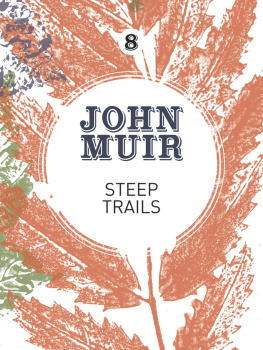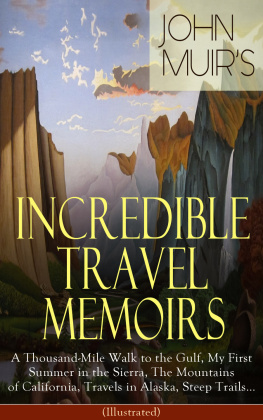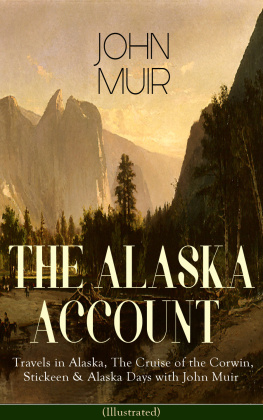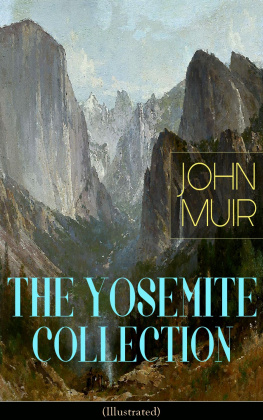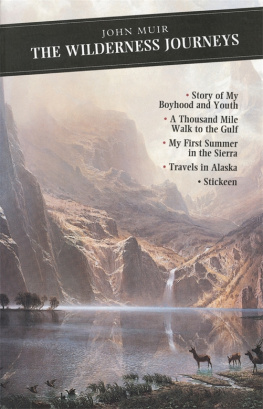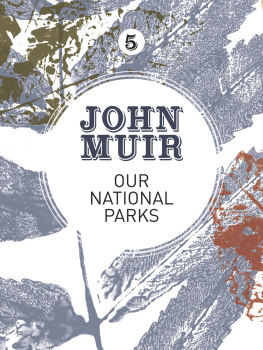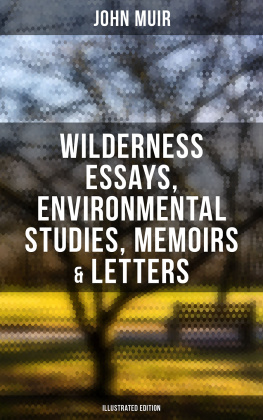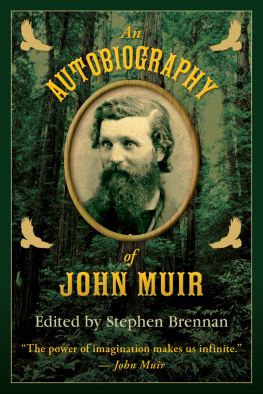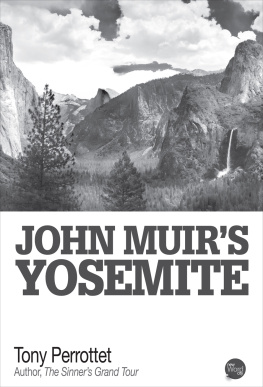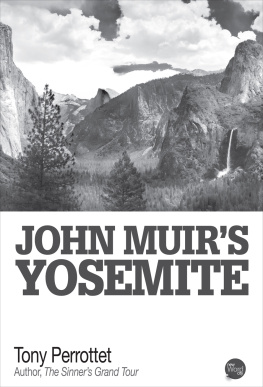We have never needed nature more than now. At a time when our relationship with our home planet is under stress, the positive words of John Muir (18381914) can help us to reconnect, retune, and readjust what it is that we should value for the survival of our species. In 1901 John Muir opened his book Our National Parks with words that might resonate for readers today: Thousands of tired, nerve-shaken, over-civilised people are beginning to find that going to the mountains is going home. This Scot, transplanted to the USA at the age of eleven by his family to help carve a farm out of the wilds of Wisconsin, came to invent the modern notion of a national park for the recreation of future generations. His initial inspiration was Yosemite Valley, deep in the Sierra Nevada mountains of California, where he was sought out by the US President, Theodore Roosevelt, who was persuaded on a characteristic Muir camping trip that such an uplifting place and its rich ecology should be preserved in perpetuity for the nation.
Anticipating the modern concept of biophilia our need for regular contact between our inner nature with the outer nature around us Muirs opening sentence continued with the idea that wildness is a necessity; and that mountain parks and reservations are useful not only as fountains of timber and irrigating rivers, but as fountains of life. Muirs suggestion that the fountains of our own lives need to be in contact with the self-renewing cycles of life in wild landscapes led him to be recognised as the founder of the American conservation movement. His establishment of the Sierra Club still to this day a vigorous local and national conservation organisation in the US arose because Muir understood the importance of local people holding government to account through membership of a national environmental movement. Muir knew that national policies would be needed if the balance between the economic usefulness of timber and rivers was to be controlled. By the end of Our National Parks Muirs tone had changed. Any fool can destroy trees, he declared in full preaching mode. God has cared for these trees but he cannot save them from fools only Uncle Sam can do that.
Actually, it was Muirs ecological knowledge, gained by close observation, by scientific experiment and by always reflecting upon the larger forces at work in nature, that resulted in insights ahead of their time, like the idea that unregulated clear cutting of timber reduced the usefulness of those irrigating rivers as fountains of life. At a time just before the notion of Oekology was being proposed, Muir wrote that, When we try to pick out anything by itself, we find it hitched to everything else in the universe. And it is in such unassuming, seductively approachable prose that Muir explored his vision of nature and our relationship with it. It was as a popular writer of newspaper and journal articles that Muir gained his following as a writer. Late in life he began crafting these little lyrical discoveries into the inspirational books that speak so clearly to our heightened environmental awareness today.
When John Muir died on Christmas Eve 1914, his two daughters asked William Bad to become Muirs literary executor and four years later he produced Steep Trails from newspaper articles and letters. This inspired collection contains some of Muirs most profound thoughts and experiences. The opening essay Wild Wool, written in 1875, has been described by Michael Cohen as probably the best ecological argument of his career. Distilling what he had learned from Darwin, Muir criticises the human manipulation of nature in the face of the evidence of the long process of natural selection for the quality and resilience of wild species of animals, wool and fruits. The wild Sierra mountain sheep produce better wool than domesticated sheep, the implication being, Michael Cohen suggests, that humans would have to return to nature if they wished to continue their own evolution. The world was not made, Muir says, especially for the uses of man. Recognising the chains of predation at work in the wild, Muir inserts his characteristic qualification based, as usual, on his observations that wild creatures are eating and being eaten, in harmonious proportions and quantities. We have to remember that Muir was writing at a time when ecology had barely been invented and what we now mean by sustainability was not the same thing as the American nineteenth century idea of wise use in which the element of wisdom was based upon short-term economic benefit.
On the other hand, Steep Trails captures some of Muirs most telling experiences. It includes the only confession by Muir of having fallen in the mountains. A Geologists Winter Walk describes ascending a precipitous rock-front, smoothed by glacial action, when I suddenly fell for the first time since I touched foot to Sierra rocks. After several somersaults, I became insensible from the shock. Coming to consciousness on the edge of a vertical drop into Tenaya Canyon Muir spoke to his feet, newly returned from the city: that is what you get by intercourse with stupid town stairs and dead pavements. Undeterred, Muir, to regain his harmony with the Sierras smooth granite, sought out the most nerve-trying places I could find confident that the last of the town fog had been shaken from both head and feet. Muir slept out on a naked boulder and then undertook another day of sketching and noting, and any form of climbing. It was all in a days work for Muir, but he had been humbled and was now newly attuned. Recently, Doug Scott wrote to me about Muirs ability to bivvy out with complete confidence in being at home in his mountain environment. Reflecting upon his own familiarity with snow-holing that led to his digging in for the night with Dougal Haston below the summit of Everest, Doug commented on my criticism of Muir for rare lapses of attention that he regarded Muir as completely blameless. Steep Trails offers readers a chance to make their own judgement, reading through Muirs holistic rhetoric of harmony to the actual remarkable experiences that he survived.
One such week-long snow-bound bivvy is described in A Perilous Night on Shastas Summit. Muir knew how to make himself safe and comfortable in a snow hole. But that essay concludes with a more serious night out in a snow storm beside a hot spring, frozen and burned, in which Muir admits that he was lucky to escape serious frostbite to his feet. He thawed them very slowly by keeping them buried in soft snow for several hours, which avoided permanent damage. Muirs intimate knowledge of the still less-travelled Shasta region is informed by his learning from the Native Americans and the white hunters he meets, making a frugal living in the wilderness: rare men, queer characters, and well worth knowing. Better lives are lived in the mountains, he reflects, than in crowded towns mildewed and dwarfed in disease and crime! This leads Muir to his famous argument for the essential restorative effect of mountaineering: the mountains are fountains, not only of rivers and fertile soil, but of men. Therefore we are all, in some sense, mountaineers, and going to the mountains is going home. Yet how many are doomed to toil in town shadows while the white mountains beckon all along the horizon!
Most of Steep Trails chapters are dispatches from Muir as travelling correspondent with a mixture of insights into local cultures, criticism of pollution and enthusiasm for everything wild. In Salt Lake City he castigates the apparent misogyny of Mormon men. In the Tabernacle he hears a church elder give thanks for fruitful fields, horses, cows, wives and implements. But after a swim in the Great Salt Lake he finds the Mormons he meets rich in human kindness as though the two things were linked. In Nevadas forests Muir pays great attention to the Native American practice of harvesting pine nuts: The Indians alone appreciate this portion of natures bounty and celebrate the harvest home with dancing and feasting. There is a wonderful account of a journey from San Francisco up the coast of Oregon to the Olympic Peninsula and Puget Sound. There is a particularly vivid account of a climb of Mount Rainier by a new route from the south in which the party were lucky to lose only an alpenstock. Muirs celebratory style infects even the most scientific accounts such as

